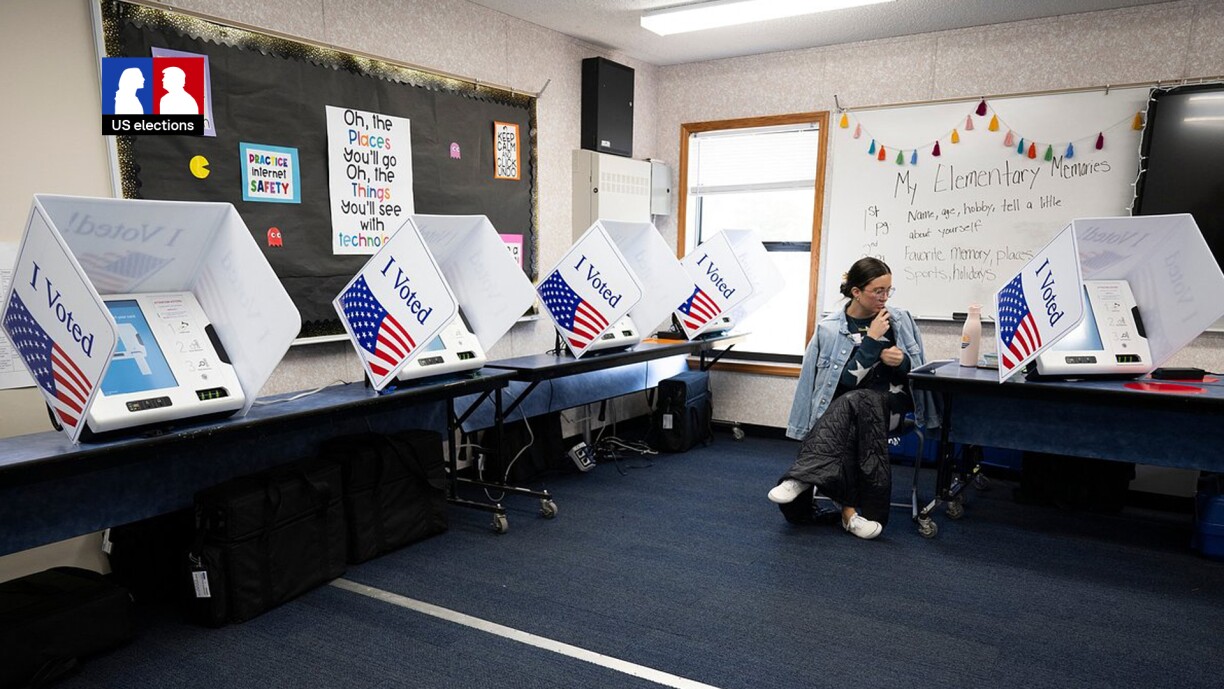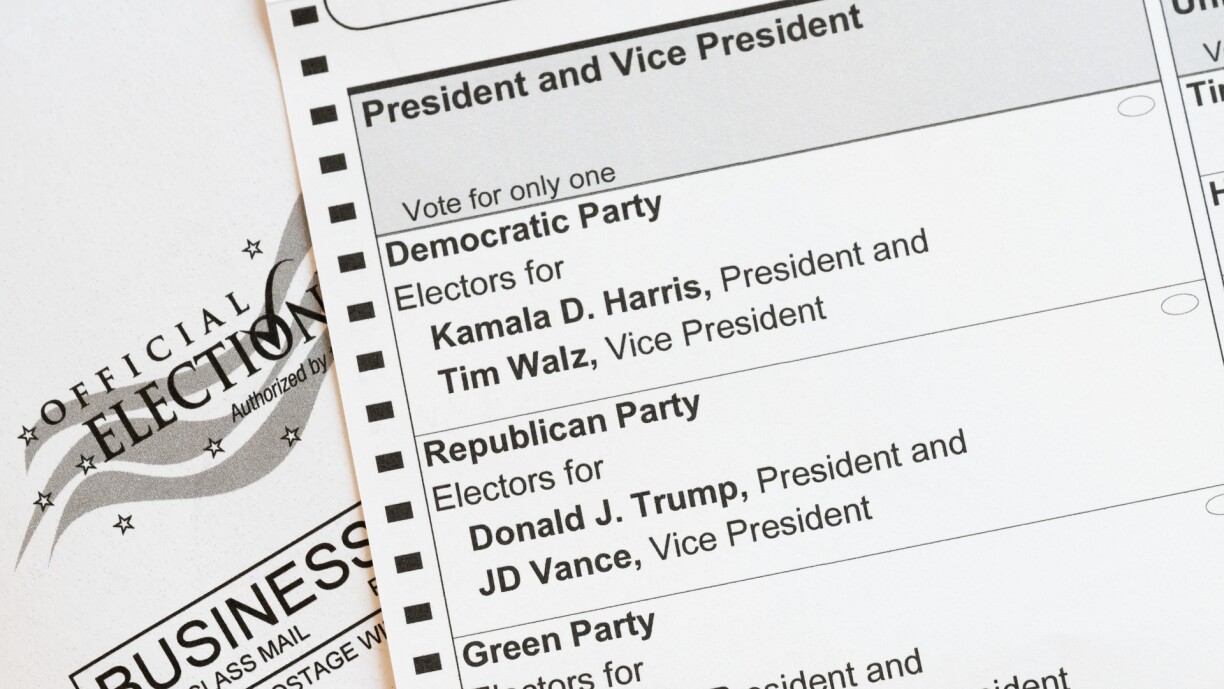
Although we will run a special live ticker as we are closing in on the election, there are some final explanations to be provided before the opening of the proverbial floodgates on 5 November. The third part of our explainer series thus breaks down all there is to know about how votes in this critical election are cast, counted, and called.
While it is difficult to outline a concrete timeline for individual results, there are certain key indicators on which to keep an eye as election day unfolds, including exit polls, early projections, and state results. Once the picture becomes clearer, we can expect Kamala Harris and Donald Trump to address voters from their election headquarters, but for various reasons outlined below, it might actually take until several days after 5 November until we have an official result.
US citizens exercising their right to vote are heading to the polling stations to cast their ballots on 5 November. Depending on state regulations, ballots may be presented either on paper, where voters fill in bubbles or make marks next to their chosen candidate, or electronically, where voters make their selections on a touchscreen. Some ballots also include options for write-in candidates, allowing voters to manually enter the name of a candidate not listed.
Voting machines play a crucial role in the process by facilitating the recording and tabulation of votes. These machines come in different forms, including optical scanners and ballot-marking devices that generate a paper record of voters’ selections. Their primary function is to speed up and streamline the voting process, reduce human error in counting, and ensure accuracy.
At the close of polls, these machines transmit vote totals to election officials for aggregation. To ensure reliability, voting machines undergo testing and certification before use, and many jurisdictions use machines that generate paper records to allow for post-election audits and recounts, ensuring a verifiable paper trail in case of disputes or errors.

Exit polls are surveys conducted with voters as they leave polling stations after casting their ballots. These polls are designed to gather early data on how different groups of people voted to facilitate projections about the outcome of the election before the official vote count is completed.
Pollsters usually select a sample of voters from various polling places across the country to ensure broad representation of the electorate. Also, they are not limited to in-person voters.Increasingly, they also account for people who voted early or by mail, as these methods have become more common in US elections.
The primary purpose of exit polls is twofold. First, they help media organisations and political analysts make early predictions about which candidate is leading and might eventually win. Second, they offer valuable insights into voter behaviour, helping to identify trends such as the issues that mattered most to voters and how different demographic groups voted.
Once the voting process is completed, the delicate process of counting ballots begins. It is not possible to predict when exactly the first tangible results will start coming out, but as with any election, the smaller precincts and districts are usually first. Election maps will thus slowly start filling up with individual district results, which will then slowly unveil state-wide trends and point towards a winner.
In US presidential elections, it has become tradition that media organisations eventually ‘call’ a state for a candidate when they are confident that one of them has secured enough votes to win that state. They do so by using a combination of exit polls, vote counts, and statistical models. As actual votes come in, media outlets compare these results to their predictions, looking for patterns that suggest which candidate is likely to win.
Each media organisation has a group of experts, sometimes called a ‘decision desk’, which carefully monitors the incoming results and uses past election data, demographic information, and live vote counts to make these calls. They wait until they are very confident that the remaining votes will not change the outcome before they declare a winner in a state.
The reason for this process is largely because the public is eager to know the results as soon as possible. Each state carries a certain number of electoral votes, and a candidate needs 270 of these to win the presidency. By calling states as results come in, the media thereby helps keep the public informed about how the race is unfolding.
Media institutions eventually go on to call the overall presidential race once they determine that a candidate has secured enough electoral votes to win. The focus here is on the path to the 270 electoral votes needed to secure the presidency, and with many states considered Democratic or Republican strongholds, all eyes will be on the elusive battleground states.
Media organisations will continuously update the running tally of electoral votes. Once it becomes clear that a candidate has won enough states to make it mathematically impossible for their opponent to catch up, the race is called, even if not all states have finished counting their votes. At that point, media outlets take on the daunting task of waiting long enough to be confident in their declaration of a president-elect, but not so long that a competing outlet beats them to it.
In 2024, it is widely expected that the race will not be called for several days, for the various reasons outlined above.
Presidential candidates usually communicate with their voters in several ways as election day unfolds. Early in the morning, they often start by casting their own vote at a local polling station, which is typically covered by the media. From there, they move to their campaign headquarters where they can monitor the election results.
Throughout the day, candidates engage with voters through speeches, social media posts, and perhaps even interviews with news outlets. They encourage people to vote, remind them of the issues they stand for, and tend to express optimism about the turnout.
As the polls begin to close in different states, candidates are expected to address their supporters from their campaign HQ. They usually share brief statements acknowledging the ongoing process and urging patience as results are counted. The tone they is strike tends to be positive, regardless of whether they are feeling confident or anxious about the outcome.
By the time the results start becoming clear, candidates often then give a major speech late at night – a victory speech if they win, a concession speech if they loose. In it they thank their supporters and congratulate the opposing candidate as per tradition.